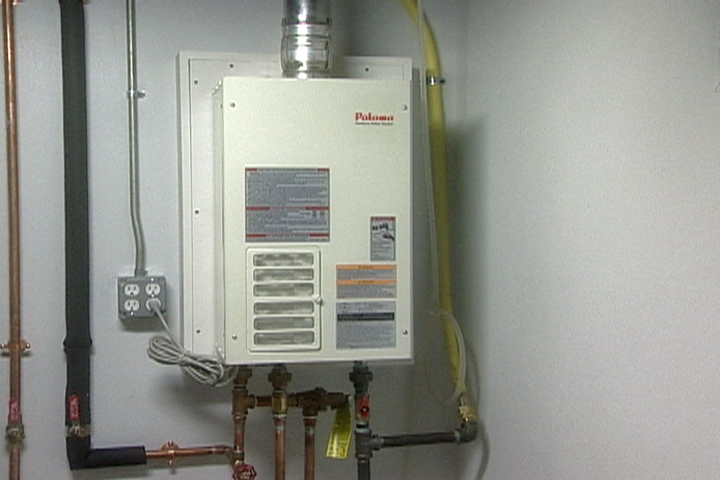How do you actually feel on the subject of Tips For Maintaining Your Hot Water Heater?

Hot water is necessary for day-to-day comfort, whether it's for a refreshing shower or cleaning meals. To guarantee your warm water system runs successfully and lasts much longer, routine maintenance is key. This article gives practical tips and understandings on just how to keep your home's warm water system to prevent interruptions and costly repair work.
Introduction
Keeping your home's hot water system may appear challenging, but with a couple of basic actions, you can ensure it runs smoothly for several years to come. This overview covers everything from comprehending your hot water system to DIY upkeep suggestions and knowing when to call expert help.
Relevance of Preserving Your Hot Water System
Regular maintenance not only extends the life expectancy of your hot water system but additionally ensures it runs successfully. Neglecting maintenance can cause lowered efficiency, higher power bills, and also premature failure of the system.
Indicators Your Hot Water System Requirements Upkeep
Understanding when your hot water system requires interest can prevent significant issues. Keep an eye out for indications such as irregular water temperature level, weird sounds from the heating unit, or rusty water.
Recognizing Your Warm Water System
Before diving into upkeep tasks, it's helpful to recognize the standard parts of your warm water system. Normally, this consists of the hot water heater itself, pipes, anode poles, and temperature level controls.
Month-to-month Upkeep Tasks
Normal regular monthly checks can assist catch minor concerns prior to they rise.
Purging the Hot Water Heater
Flushing your water heater removes debris build-up, improving efficiency and prolonging its life.
Checking and Replacing Anode Rods
Anode rods avoid rust inside the container. Evaluating and changing them when broken is critical.
Inspecting and Adjusting Temperature Level Setups
Readjusting the temperature level setups makes certain optimum efficiency and safety and security.
Do It Yourself Tips for Upkeep
You can do a number of upkeep tasks yourself to keep your hot water system in top problem.
Looking for Leakages
Routinely evaluate pipelines and links for leakages, as these can result in water damage and higher bills.
Examining Stress Alleviation Valves
Evaluating the pressure relief valve guarantees it operates properly and avoids too much stress accumulation.
Protecting Pipes
Shielding warm water pipes decreases heat loss and can save energy.
When to Call an Expert
While DIY upkeep is helpful, some problems require professional competence.
Facility Issues Calling For Professional Aid
Examples consist of major leakages, electrical issues, or if your hot water heater is constantly underperforming.
Regular Expert Upkeep Benefits
Specialist maintenance can include detailed inspections, tune-ups, and making sure conformity with safety requirements.
Verdict
Regular upkeep of your home's warm water system is important for effectiveness, long life, and cost financial savings. By adhering to these suggestions and understanding when to seek professional help, you can guarantee a trustworthy supply of warm water without unanticipated disturbances.
How to Maintain an Instant Hot Water Heater
Before tinkering with your hot water heater, make sure that it’s not powered on. You also have to turn off the main circuit breaker and shut off the main gas line to prevent accidents. Also turn off the water valves connected to your unit to prevent water from flowing into and out of the appliance. 2. When you’re done, you have to detach the purge valves’ caps. These look like the letter “T†and are situated on either side of the water valves. Doing so will release any pressure that has accumulated inside the valves while at the same time avoid hot water from shooting out and burning your skin. 3. When the purge valves’ caps are removed, you have to connect your hosing lines to the valves. Your unit should have come with three hoses but if it didn’t, you can purchase these things from any hardware or home repair shops. You can also get them from retail stores that sell water heating systems. Read the user’s manual and follow it to complete this task properly. When the hosing lines are connected, open the purge port’s valves. 4. You should never use harsh chemical cleaners or solutions when cleaning your unit. Make use of white vinegar instead. It should be undiluted and you’ll probably use about 2 gallons. 5. Now flush your water heater. This task should probably take about 40 minutes. We can’t give you specific directions for this because the procedure is carried out depending on the type, model and brand of your heater. With that being said, refer to the user’s manual. 6. When you’re done draining the unit, you have to turn off the purge port valves again. Remove the hosing lines that you earlier installed on each of the water valves. Put the valve caps (purge port) back in their respective places and be very careful so as not to damage the rubber discs that are found inside these caps. 7. Now that everything’s back in place, check your user’s manual again to find out how to reactivate your water heating system. 8. Once it is working, turn one of your hot water faucets on just to let air pass through the heater’s water supply pipes. Leave the tap on until water flows smoothly out of it. https://www.orrplumbing.com/blog/2014/september/how-to-maintain-an-instant-hot-water-heater/

As a serious person who reads on Tips on Maintaining a Water Heater, I thought sharing that excerpt was beneficial. Are you aware of someone else who is in the market for Tips on Maintaining a Water Heater? Do not hesitate to promote it. Thanks for being here. Come back soon.
Call Today